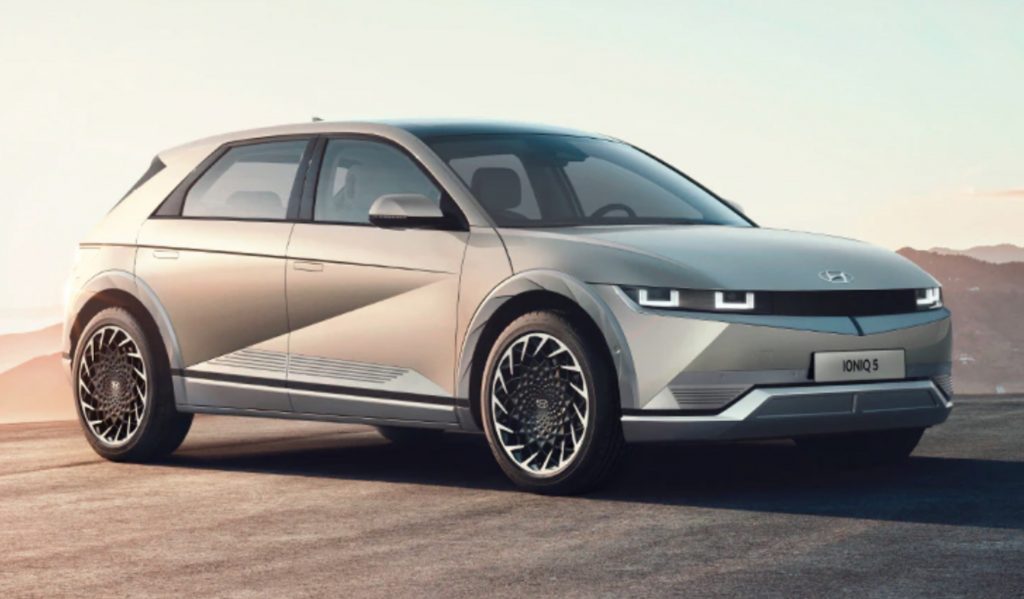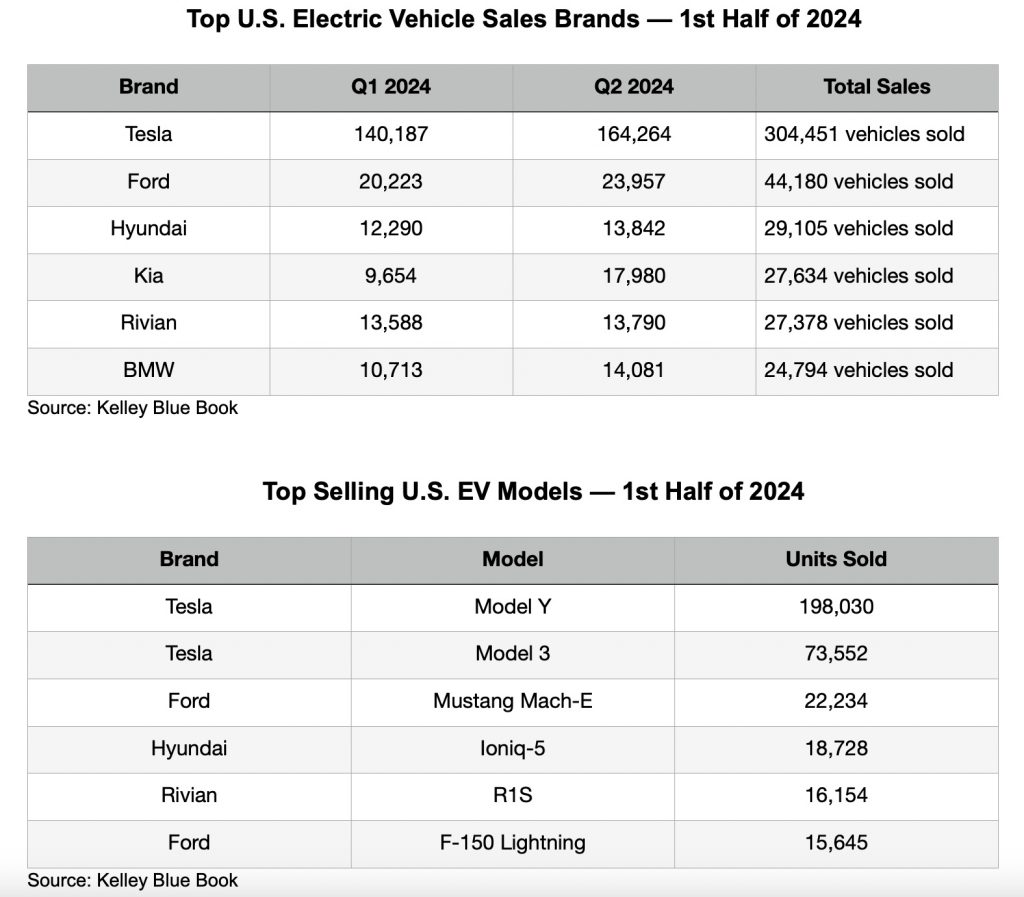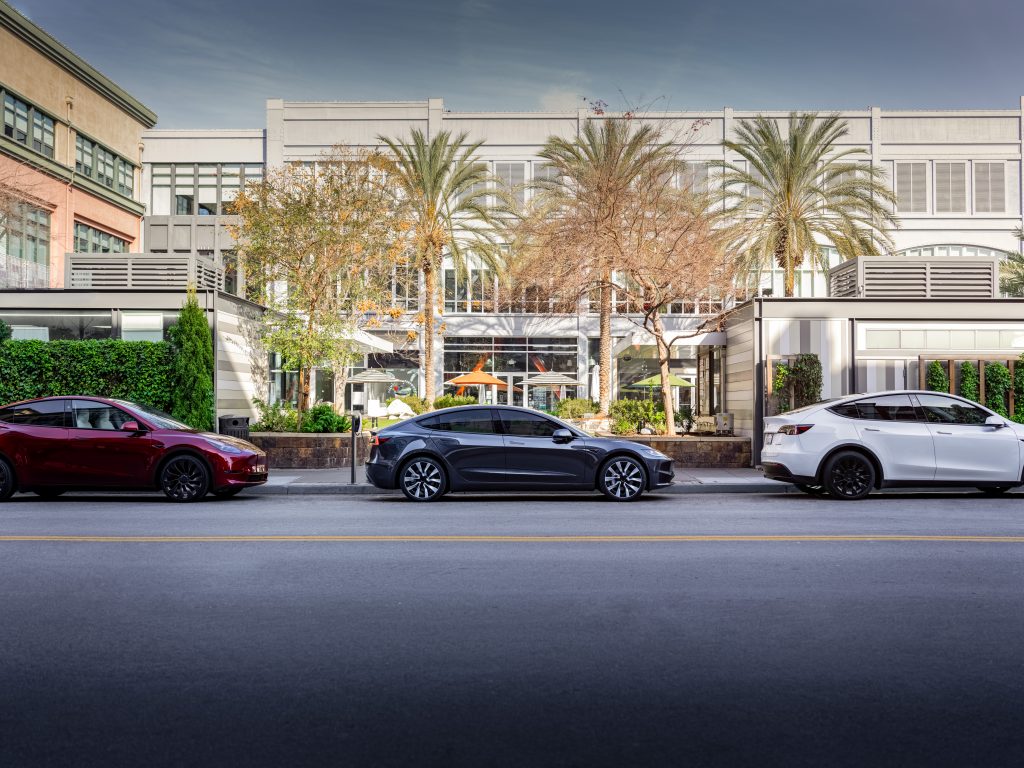
It wasn’t that long ago that we all heard about Ford Motor Co. surging forward in electric vehicle sales in the U.S. While that trend has continued, Hyundai Motor America and its three car brands stand out this year. Ford saw real gains with EV sales at 44,180, up from 25,709 last year in the first half. Hyundai, Kia, and Genesis all saw real gains over the first half of 2023. With its luxury brand Genesis and its Kia brand included, Hyundai Motor America sold 59,980 electric vehicles in the U.S. in the first half of this year.
At 304,451 units sold in the U.S. in the first half of this year, Tesla’s share of the market has been declining. It reached 75% in 2022, and is now at 49.7% according to Kelley Blue Book.
Hyundai’s Ioniq 5 crossover SUV has been its top selling battery electric model. It’s built on the E-GMP – the Electric Global Modular Platform – which the South Korean automaker says opens up a new era for the company, pioneering the development of EVs. It’s capable of quick-charging at peak rates of 235 kW, and only needs 18 minutes to go from 10 to 80 percent charged. The range is anywhere between 220 and 303 miles, based on the model and the battery.
Sales have been very good for the Ioniq 5, even though it doesn’t qualify for the federal $7,500 tax incentive. The company expects that it will qualify for this tax credit starting in October. That’s when it will be the first EV built at its Georgia assembly plant. Recent changes to the federal tax incentive have blocked foreign-made EVs from gaining the tax credit.
The EV market continues to be strong in the U.S., and along with several other countries overseas. For the first half of the year, 599,372 EVs were sold in the U.S.; that’s up from 558,377 in the first half of last year — a 7.3% increase, according to Kelley Blue Book.

Hyundai, which first came to the U.S. market in 1986, has been enjoying winning impressive sales gains — along with industry awards — in recent years. The 2023 IONIQ 6 was named World Car of the Year, World Car Design of the Year, and World Electric Vehicle. The 2025 Ioniq 5 N was named 2024 World Performance Car. The “N” designation is new to the Hyundai lineup with attention being placed on high-performance standards.
The 2024 Ioniq 5 has been recognized as a 2023 TOP SAFETY PICK+ by the IIHS, its highest safety award. The 2024 Ioniq 5 has a starting MSRP of $41,800.
The crossover EV6 has been Kia’s top selling EV. Kia dealers are offering a 36-month lease for $259 in monthly payments.
Hyundai has been present at ACT Expo and other automotive and fleet industry events. That includes its Nexo Fuel Cell, a dedicated hydrogen-powered SUV with an estimated range of 380 miles and zero emissions. In February, the automaker forged a deal with Italian vehicle manufacturer Iveco. Hyundai Motor Co. will supply an all-electric light commercial vehicle from its global eLCV platform to Iveco Group in Europe.
And in other news…….
Discount offer on conference: AltWheels Fleet Day offers a discount of $90 with a $7.88 fee through August 1 for its annual one-day conference. This year it will take place on Monday, Oct. 7, 2024. It brings together corporate and municipal fleet managers and clean-fleet stakeholders working to reduce emissions, increase reliability, and lower costs for tomorrow’s transportation needs. Watch more about the conference on this video.
Award winning RIDE electric school bus: For the second year in a row, bus maker RIDE won Student Transportation News’ prestigious Best Green Technology Award. This year, the accolade was awarded to the Creator, the company’s innovative Type C school bus. The Creator electric bus offers a driving range of up to 208 miles, a battery capacity of up to 282 kWh, and seats up to 78 passengers. It comes with a 12-year battery warranty. BYD | RIDE school buses including The Achiever are available throughout the U.S., and are eligible to participate in the EPA Clean School Bus program and several state incentive programs including the California HVIP voucher program.
Truck sales in 2024: Times are good for fleet and commercial vehicles sales. The National Truck Equipment Association (NTEA) predicts a 2% growth in truck and equipment sales for the remainder of the year. That’s coming from moderate growth in the U.S. economy. That growth should be fueled by increased activity in residential construction, transportation and warehousing, and state/local government spending, according to Gary Perman, president, PermanTech.

